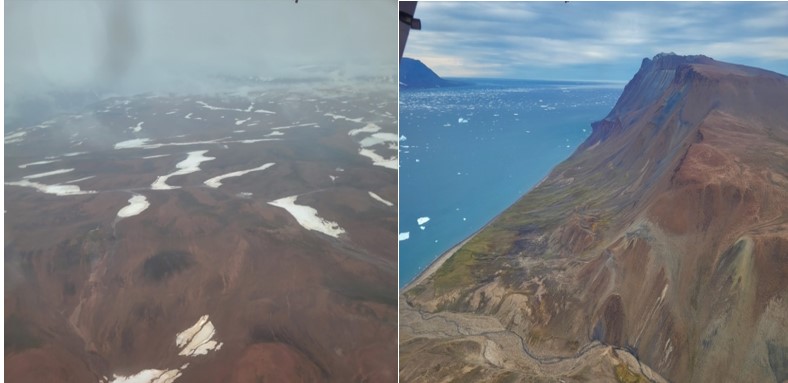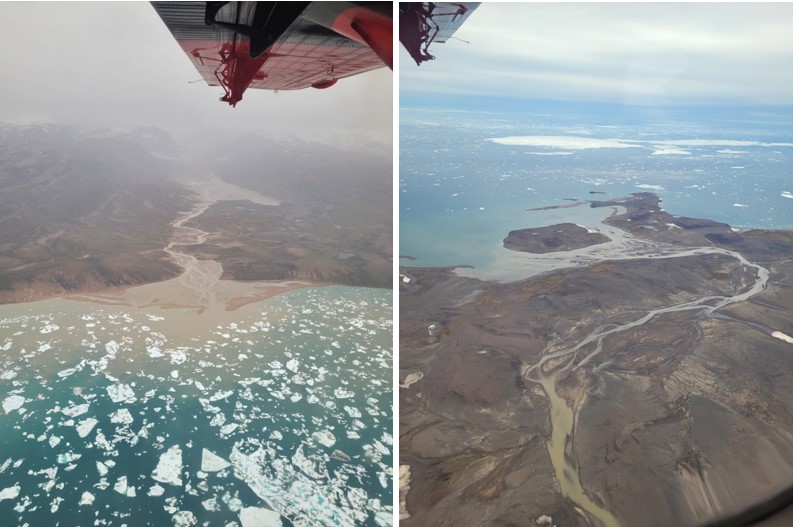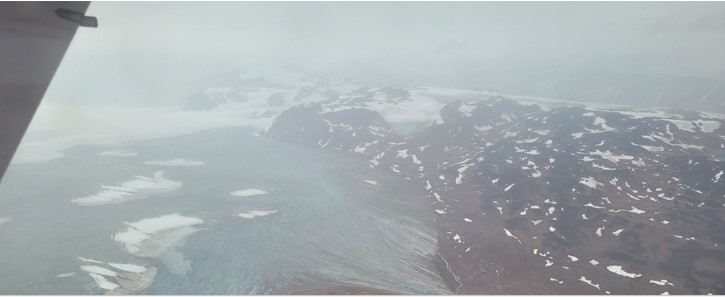Two young scientists share their experiences doing fieldwork in remote Northeast Greenland, check out their blog
A long journey in a small plane over a huge and amazing landscape
Tuesday, August 8, 2023
2023 is the year when southern Europe is dealing with extreme heat and the sea has a fever. Meanwhile northern Europe is cursed with a cold and rainy summer causing floodings. It is also the year where we go to northeast Greenland to understand how climate change affects the most northern systems of the planet. The team in Young Sound, NE Greenland this year is me (Isolde Puts) and Henry Henson, who will also contribute to this blog, staying in Aarhus this time is Alina Mostovaya and Johnna Holding (the team leader).

It was only fitting that we left during storm Hans: it was a bumpy ride from Aarhus-Copenhagen (Denmark), and at departure toward Reykjavik (Iceland). Our destination is the marine research station Daneborg in Young Sound. To reach our field station, we needed to travel through progressively smaller and smaller airports, next was Akureyrí (Iceland), and then the following day to Nerlerit Inaat––Constable Point––Greenland. In Akureyrí, a woman walked up to us in the small airport, to ask who we are and to give us the information about departure to Greenland the next day. We must have looked like proper lost researchers, or she may have known the others that had gotten out of the plane, because she was able to recognize us among the other travelers.

In the evening the team met in a café, joined by other research teams working along the East Greenland coast. In the morning, we stocked up on some tax-free goodies, and food––in case we got stuck in Constable Point ––and off we went! Most of the ride was foggy, but we got some spectacular views. I (Isolde, who has mainly studied lakes and streams previously, but am now dipping my toes into the sea) haven’t been in Greenland yet, but I had expected to see more ice. The landscape was beautiful and filled with colors, it made me wonder what it is that colors the landscape, is the redness from tundra vegetation and wetlands, or is it from iron, or something else? From the plane I can see the colors of lakes and streams differed a lot, showing local conditions are very variable.

With the climate warming and wetting especially in these Arctic regions, the increasing amounts of water flowing in streams and rivers bring whatever is present in the land–– could be sediments, organic material, minerals, metals––into the coasts. This became very visible during the views we got during the flight. It is our goal to understand how these increased influxes of freshwater affects the coastal systems. We will do this by measuring the physical, chemical, and biological conditions along a gradient from a river (Tyroler river) flowing into the fjord of Young Sound and into the open sea. We will also measure volatile organic carbon compounds that are potentially coming out from these river inputs into the atmosphere. In Young Sound we join the Greenland Ecosystem Monitoring (GEM) program who has been collecting samples from this area for over 25 years, and take our own samples to do additional experiments. In the experiments we will add glacial sediments to test effects of sediments on the water physiochemistry and biology. But more about that later. We touched down safely and were met by members of the Danish military Sirius patrol before walking to our research station.
-Isolde

